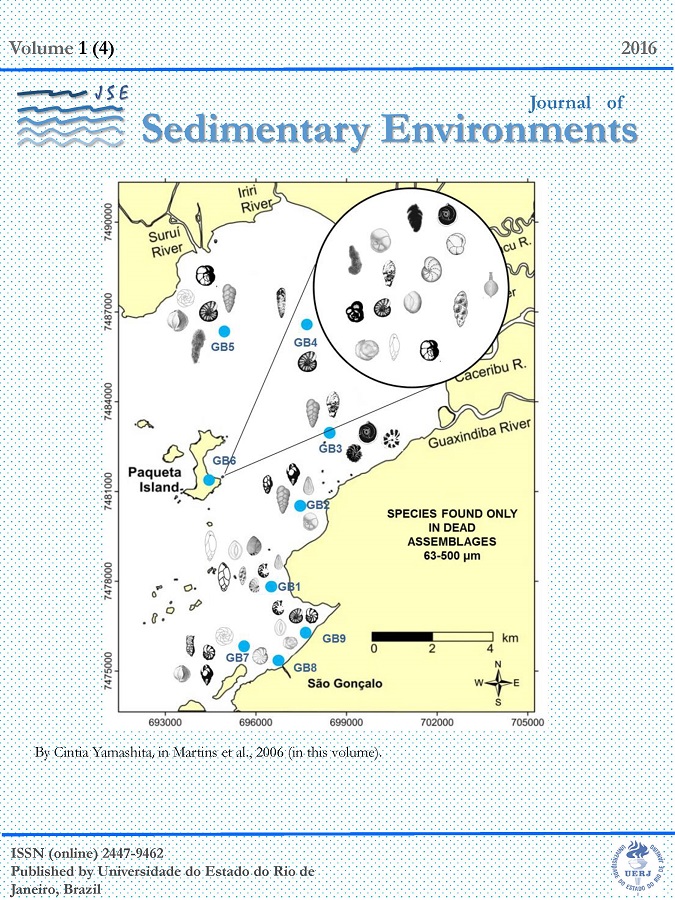GROUNDWATER PROSPECTING ON THE ONSHORE PORTION OF CAMPOS BASIN, IN MICO LEÃO DOURADO PARK, CABO FRIO MUNICIPALITY, RIO DE JANEIRO, BRAZIL, BY GPR (GROUND PENETRATING RADAR) METHOD
DOI:
https://doi.org/10.12957/jse.2016.26867Keywords:
Groundwater prospecting, Ground Penetrating Radar (GPR), Electromagnetic methods, Reflection, 2D GPR Profiles, Sedimentary basin edgeAbstract
The coastal region of Rio de Janeiro State (Brazil) is strongly influenced by the presence of brackish water in its sedimentary substrate. This study aims to map localities where the intrusion of brackish water in groundwater is taking place and to provide a guiding tool using the Ground Penetrating Radar (GPR) data to search freshwater for social use. The study area is located in Mico Leão Dourado Park, at the northern part of Cabo Frio municipality, Rio de Janeiro State, at 1.5 km from the coast, onshore to Campos Basin. In this region, the potable water is scarce; therefore, the exploration and use of groundwater constitute an important alternative to the local population.
We obtained one line of Ground Penetrating Radar (GPR) record on 2D profile through 20 meters depth using 100Mhz antenna in quaternary sedimentary area of the central area of Mico Leão Dourado Park. The method provides variations in the subsoil dielectric discontinuity as a function of GPR electromagnetic wave emission. The brackish water intrusion limited the penetration of GPR waves; thus, at some places, because of the change in conductivity of environment, it was not possible to map larger sediment thickness due to those conditions.
Results of this research allowed understanding why freshwater or brackish water is being found in neighboring wells of the study area. The arrangement of the sedimentary layers interleaved with clay lenses allows getting freshwater from holes; and, in places without clay lenses, the wells have brackish water. The layered sedimentary structure seems to delimit the clay lenses which avoid the intrusion of marine water and the salinization of groundwater.
The GPR method proved to be a useful tool for the characterization of the sediment layers on the edges of sedimentary basins, such as in Mico Leão Dourado Park, in Cabo Frio Region.
Downloads
Published
Issue
Section
License

Journal of Sedimentary Environments (JSE) is licensed under a Creative Commons Attribution-Noncommercial-Share Alike 4.0 International License.

